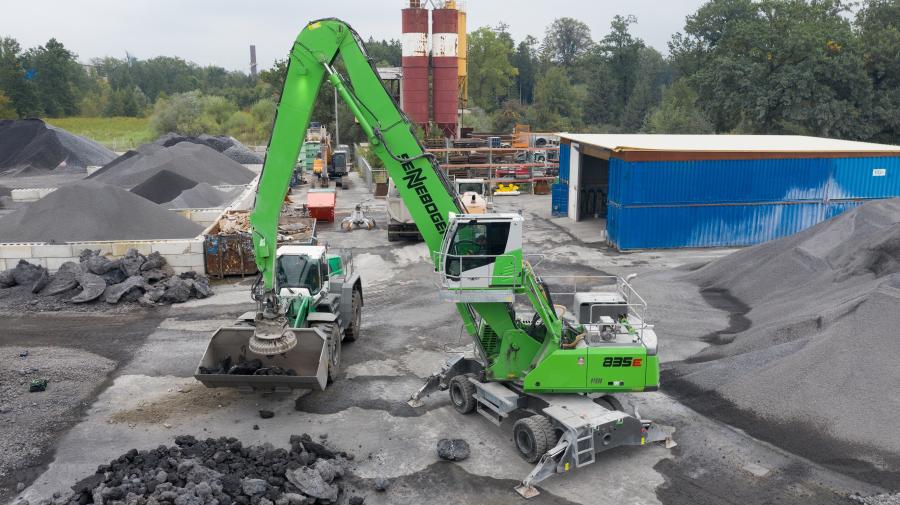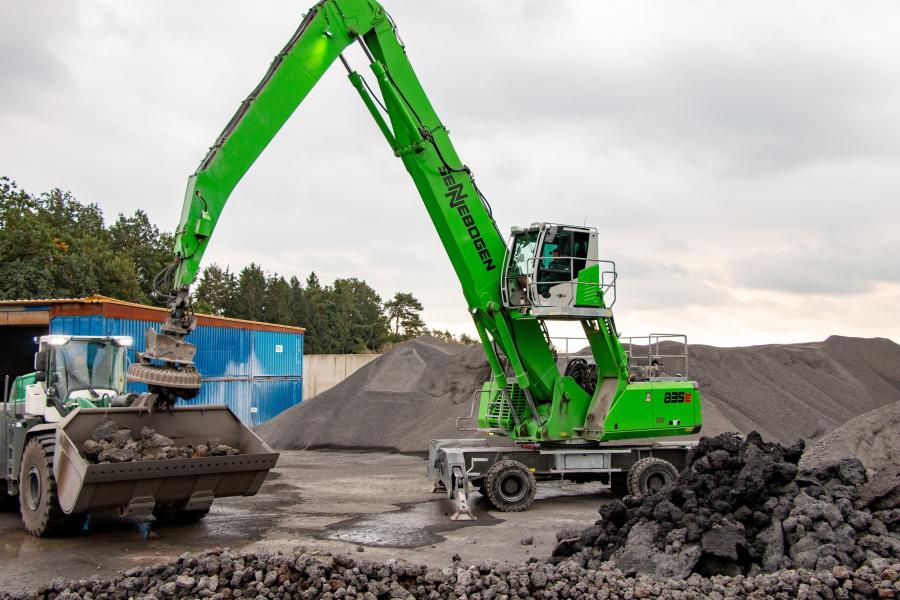
Mon June 01, 2020
Sennebogen
Steel production is a vast, complex and highly integrated process. From the delivery of scrap, to smelting, loading finished material, to processing slag, each component depends on the others to function seamlessly and continuously.
In Meitingen, Germany, Max Aicher Umwelt (MAU) processes slag from the furnaces of the nearby Lech-Stahlwerke mill. MAU takes its position in the production serious. While it operates to maximize its own business interests in the production and marketing of slag by-products, it recognizes that any machine downtime on its site will create bottlenecks upstream in the steel supply chain.
For this reason, more than any other, the MAU team recently purchased its third successive Sennebogen 835 M purpose-built material handler.
True Reliability
MAU regards the rubber-tired 835 M to be a tried, tested and true component in its processing system. Efficient sorting and loading are key to the firm's profitability and dependability.
According to MAU Division Manager Benjamin Kinlinger, "A standstill on our site can, in a worst-case scenario, lead to a standstill across the whole steelworks. When we are buying machines, a 24-hour all-round machine service is absolutely essential for us."
Sennebogen's robust engineering of the 835 M combined with effective service support from their local dealer keeps the material handler up and running, every day.
The 8.5 acre MAU yard employs 25 people, processing all co-products and by-products from Lech-Stahlwerke, primarily from its electric arc furnace slag. The firm is a leading supplier of sustainable construction material in the form of processed EAFS (electric arc furnace slag): the lava-like, solidified molten leftovers from steel making. Road building contractors, for example, welcome MAU's processed slag as an alternative to gravel and grit. The steel industry welcomes this recycling process for conserving natural resources and reducing waste disposal costs. Every year, Max Aicher Umwelt converts 200,000 tonnes of slag into useful material.

Sennebogen 835 M E-Series sorts slag for further crushing into grit measuring less than 6 in. (15 cm).
Safe, Fuel-Efficient, Robust
As well as being reliable, the purpose-built material handler is a multi-functional, powerful and, above all, robust machine, according to the manufacturer.
The 835 can be fitted with a magnet or an orange peel grab, as needed, to sort pieces of slag weighing as much as 22,046 lb. (10,000 kg). Weighing just over 100,000 lb. (45,800 kg), the 835 and all its functions are powered by a 305 HP (231 kW) Tier IV Final diesel engine.
The machine's owners and operators are impressed by the 835's remarkable fuel efficiency, sipping just 3.7 gallons (13.9 liters) of diesel per hour.
"You can only really judge a machine's consumption rate once it has been bought and put to work in real conditions. But even here, Sennebogen keeps the promises it made," said Kinlinger.
The machine's efficiency is credited to Sennebogen's "Green Efficiency" package of engine controls and hydraulic design. Hydraulic oil flow rate is optimally adjusted to the tasks being carried out by the machine; depending on the power required, the right amount of oil is pumped through the large-scale lines to achieve the best efficiency. Fuel-saving engine features include automatic idle and stop functions and a switchable "Eco Mode" that automatically adjust engine speed to the work at hand.
For more information, visit www.sennebogen-na.com.
 Aggregate Equipment
Aggregate Equipment Articles
Articles Sign up for Updates
Sign up for Updates Sell Your Machines
Sell Your Machines

 Aggregate Equipment
Aggregate Equipment Aggregate Dealers
Aggregate Dealers Aggregate Articles
Aggregate Articles Sign up for Updates
Sign up for Updates Sell Your Machines
Sell Your Machines